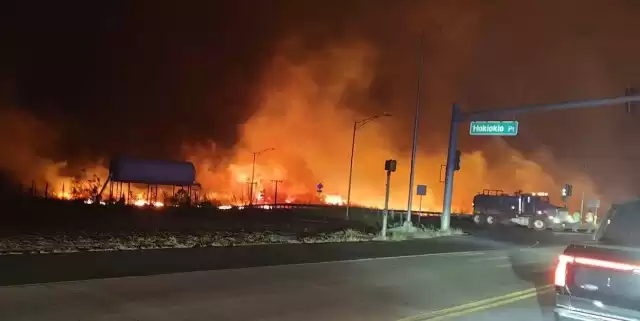Climate change fueling conditions driving Maui's devastating fires
Wildfires in Hawaii are particularly damaging due to a dangerous combination of high winds, low humidity, and dry vegetation. Climate change is increasing the likelihood of extreme weather events.
The wildfires in Hawaii have been particularly destructive due to a dangerous combination of factors, including high winds, low humidity, and dry vegetation. Experts believe that climate change is contributing to the increased likelihood of extreme weather events like these wildfires. The unpredictable and unforeseen combinations of conditions are fueling this extreme fire weather, highlighting the fact that nowhere is immune to this issue.
The Maui fires were driven by major differences in air pressure, which caused unusually strong trade winds. Trade winds are a normal feature of Hawaii's climate, but Hurricane Dora exacerbated the low-pressure system and increased the difference in air pressure, leading to these strong winds. The impact of Hurricane Dora, even from a distance of 500 miles away, caught experts off guard.
Strong winds, combined with low humidity and dry vegetation, increase the danger of wildfires, even in a tropical island like Maui. When all of these conditions occur simultaneously, it is referred to as "red flag conditions" by the National Weather Service. Climate change is contributing to increased vegetation dryness, as higher temperatures cause faster drying even with the same amount of precipitation.
The wet season in Maui can lead to the rapid growth of Guinea grass, an invasive species that can reach up to 10 feet tall. When it dries out, it becomes highly flammable and contributes to the wildfire risk. Climate change exacerbates this problem by creating hotter and drier conditions with variable rainfall.
In addition to increasing the fire risk, climate change also makes stronger hurricanes more likely. These storms can fuel stronger wind events, such as the one behind the Maui fires. Climate change is also responsible for other threats, such as the increasing intensity of hurricanes worldwide due to warmer air holding more water. Rising sea levels also contribute to more severe flooding from storm surges during landfall.
While climate change cannot be directly attributed to singular events, its impact on extreme weather is undeniable. Communities are facing challenges that are beyond what they are used to dealing with. The combination of multiple, interactive challenges is what leads to these disasters. It is crucial to address climate change and its effects on extreme weather to mitigate the risks and protect communities.












Comments on Climate change fueling conditions driving Maui's devastating fires